Table of contents
Nori sheets are thin, dried sheets of red algae that are mainly used for making sushi. The red algae sheets are often roasted and are therefore not considered raw . Organic nori sheets are occasionally available for purchase.
Use in the kitchen
Nori leaves are dried red algae pressed into a leaf shape, which are traditionally used in Japanese cuisine for the preparation of sushi. The red algae used for this mainly belong to the genus of purple kelp ( Porphyra ssp.). 1 Porphyra yezoensis, Porphyra tenera and Porphyra laciniata are commonly used species.
The square, papery leaves are usually roasted, but there are also some in raw quality. However, to prepare sushi you need roasted nori leaves, so-called yaki nori. The unroasted leaves, called hoshi nori, would have to be roasted briefly for sushi. Nori leaves taste pleasantly sweet, a little like the sea, and have a subtle umami note. The consistency of the roasted leaves is slightly crispy.
Yaki-Nori, the roasted nori leaves, are distinguished from Kizami-Nori, which are roasted nori strips, and Ajitsuke-Nori, roasted nori strips seasoned with soy sauce . Ao-Nori are finely ground nori seaweed. The powder is used primarily for seasoning and garnishing rice, noodle dishes and salads.
The most well-known use of Yaki-Nori is for the preparation of sushi (e.g. Maki, Gunkan-Maki, Temaki), more precisely for covering the short grain rice marinated in rice vinegar . The leaves should not be soaked or moistened before filling. If it is too moist, it will tear during rolling. The filling moistens the leaf sufficiently. Vegan Maki-Sushi is traditionally filled with cucumber, avocado, red bell peppers, pumpkin, pickled radish, shiitake mushrooms or tofu . But mango, dried tomatoes, carrots and sweet potatoes also taste great in sushi rolls - there are no limits to creativity. Three unusual sushi recipes are as follows:
- Nori rolls with ginger-almond paste and raw vegetables
- Raw vegan sushi with celery rice and ginger-radish-wasabi
- Raw sushi with celery filling and sunflower seeds
If you have nori sheets left over after rolling sushi and don't plan on making more sushi any time soon, you can brush the leftover sheets with a little oil and salt and bake them in the oven for a few minutes to make crispy chips. You can also wrap them in omelettes and use them up that way - or eat them straight away.
Red seaweed leaves, cut or torn into pieces, are used to spice up all kinds of vegetarian and vegan dishes, such as soups (eg ramen, miso), salads, vegetable stir-fries, pasta dishes and rice dishes. They also taste good in a spicy chickpea bowl or mixed into mashed potatoes.
Finely chopped nori leaves can also be used to make the Japanese spice mixture Furikake, which is mainly used for rice. In addition to nori, this consists of sesame, salt, sugar, soy sauce and traditional dried fish flakes (bento flakes), which can be safely omitted for the vegan version.
Vegan recipe for miso soup with nori
Ingredients (for 4 people): 200 g tofu, 1 tbsp soy sauce (low-salt), 2 tsp sesame oil, 100 g green asparagus, 100 g carrots, 100 g sugar snap peas, 1 bunch of spring onions, 1 piece of ginger (approx. 2 cm), 2-4 nori leaves (preferably organic), 750 ml vegetable stock, 60 g miso paste .
Preparation: Cut the tofu into cubes (approx. 1 cm) and place in a bowl. Add soy sauce and sesame oil and mix. Wash the asparagus, carrots and sugar snap peas. Peel the carrots. Cut the ends off the asparagus and sugar snap peas. Cut the asparagus, carrots and sugar snap peas diagonally into thick slices (approx. ½ cm). Clean the spring onions. Cut the white part of the spring onions lengthways into fine strips, the green part into long pieces (approx. 5 cm). Peel the ginger and cut into fine strips. Cut or tear the nori leaves into bite-sized pieces. Bring the vegetable stock to the boil and cook the asparagus, carrots and sugar snap peas in it for approx. 2 minutes. Reduce the heat and stir the miso paste into the soup. Add the tofu, spring onions, ginger and seaweed to the vegan miso soup and let everything simmer for approx. 5 minutes over low heat. Divide between four bowls and serve.
Vegan recipes with nori sheets can be found under the note: " Recipes that have the most of this ingredient ".
| Not only vegans or vegetarians should read this: Vegans often eat unhealthily. Avoidable nutritional errors . |
Purchasing - Storage
Nori leaves can be bought all year round from major retailers such as Coop, Migros, Spar, Aldi, Lidl, Rewe, Edeka, Hofer, Billa etc. Smaller supermarkets such as Denner and Volg do not offer the dried red algae leaves or only offer them during special promotions. They are available in organic quality in organic supermarkets such as Denn's Biomarkt and Alnatura . Of course, the algae leaves are also available in Asian grocery stores.
In Europe, you can practically only find roasted nori sheets. The best chance of finding gently dried, unroasted red algae sheets in raw food quality is in online shops. Raw, untreated nori sheets can be recognized by their brownish to reddish color, in contrast to roasted sheets, which are more greenish.
Seaweed leaves also vary in quality. They are divided into the categories green, silver and gold in ascending order of quality. The main difference is in thickness. Green quality nori leaves are the thinnest, while gold quality leaves are the thickest and most densely pressed. They therefore appear darker, are more tear-resistant and taste more intense than the others. If you prefer something milder, you're better off choosing green and silver quality leaves. Unfortunately, the quality level is not indicated on all packages.
The availability of nori sheets varies depending on the size of the store, catchment area, etc. Our recorded food prices for the DA-CH countries can be found above under the ingredient image - and by clicking on them you can see their development at different suppliers.
Storage tips
Opened packs of nori sheets are best stored in an airtight container in a dry, dark place. This way, the sheets can be stored for several months.
Ingredients - Nutritional values - Calories
Here we realistically show you the nori leaf ingredients and nori leaf nutrients per nori sheet (approx. 2.5 g ) instead of per 100 g as usual.
With 8.8 kcal per 2.5 g, a nori sheet made from red algae is low in calories. Carbohydrates (0.78 g/2.5 g),fiber (0.22 g/2.5 g) and fats (0.1 g/2.5 g) are also only present in small amounts. Proteins (protein) are contained at 1.1 g/2.5 g. With its salt content (86 mg/2.5 g), a nori sheet covers 3.6% of the daily requirement. There are 3439 mg of salt per 100 g, which exceeds the daily requirement and is unhealthy. 2,13 However, since you normally only use a few sheets per meal, the salt content is not harmful to health.
The nori leaf is particularly rich in folate . The content of 31 µg/2.5g (15.4% of the daily requirement) is similar to that of dried dulse (32 µg/2.5g). Only yeast extract contains slightly more folate at 95 µg/2.5g. 2,13
Iodine is also present in considerable quantities at around 7.9 µg/2.5g (5.1% of the daily requirement). Spirulina (11.4 µg/2.5g) and umeboshi paste (7.8 µg/2.5g) contain a similar amount. Dried kombu seaweed contains much more (too much) iodine (7385 µg/2.5g). 2,13 You can find more on the subject of iodine in the chapter "Danger - Intolerances - Side Effects".
There are 19 mg of magnesium in a 2.5 g nori sheet (5% of the daily requirement). Dried kombu seaweed has slightly less magnesium at 12.8 mg/2.5g and agar-agar has slightly more at 19.3 mg/2.5g. 2.13
Other notable nori leaf vitamins include vitamin C (ascorbic acid), riboflavin (vitamin B2 ) and vitamin A .
The complete ingredients of red algae leaves, the coverage of the daily requirement and comparison values with other ingredients can be found in our nutrient tables. In the article Nutrients explained you will get a detailed insight into the topic.
Health Effects
Are Nori Leaves Healthy? Nori, dried purple seaweed ( Porphyra ssp.), is known to contain numerous nutritional and biofunctional components, including proteins, vitamins (e.g. vitamin C and members of the vitamin B family), minerals, dietary fiber, polyunsaturated fatty acids (such as omega-3 ), carotenoids, saccharides and mycosporin-like amino acids.1,3 The bioactive compounds exhibit a range of health-promoting properties such as antioxidant, immunomodulatory, antihypertensive, anticancer and anticoagulant.4 The results of pharmacological studies have demonstrated the efficacy of Porphyra in the treatment of goiter, hypertension, bronchitis, laryngitis, edema, measles and hyperglycemia.3
Porphyran, one of the main components of Porphyra yezoensis and related to agarose, is a linear sulfated polysaccharide. In addition to its use as a dietary fiber in nori, studies show that porphyran has various physiological effects, including immunomodulatory, anti-inflammatory, antioxidant, antihyperlipidemic, hypercholesterolemic, and anti-tumor effects. A 2015 study examined the levels of porphyran in nori leaves and its production waste and found that the nori waste had a much higher porphyran content than the actual leaves. 1
Many studies indicate that vitamin B12 (cobalamin) is only found in significant amounts in animal foods, meaning that no plant-based food naturally contains sufficient amounts (of the usable form) of vitamin B 12. 14,15 However, a 2014 study reported the occurrence of the vitamin in dried purple kelp ( Porphyra ssp.) and green algae of the genus Enteromorpha. 5 We doubt that the amounts contained can cover the daily requirement. A 2017 study also indicates that although many analytical studies attribute significant amounts of vitamin B12 to dried and roasted nori products, it is possible that the drying process and storage destroys the vitamin and/or converts it into inactive B12 analogues. 6 You can find out more about vitamin B12 in the related article and in the article Vegans often eat unhealthily. Avoidable nutritional errors.
Secondary plant substances
Many of the health effects of nori leaves can be attributed to the secondary plant substances they contain. Our article on secondary plant substances provides an overview of the classification of substance groups, their occurrence in foods and possible effects on humans. Nori leaves contain the following secondary plant substances, among others: 21,22,23
- Isoprenoids: diterpenes; sesquiterpenes; Triterpenes: Steroids (cholesterol, desmosterol, cholesta-4,6-dien-3-ol, cholest-5-ene-3,7-diol); Tetraterpenes: carotenoids (carotenes: alpha-carotene, beta-carotene; xanthophylls: antheraxanthin, cryptoxanthin, lutein, violaxanthin, zeaxanthin)
- Polyphenols: Phenolic acids: hydroxybenzoic acid (gallic acid, protocatechuic acid, genistic acid, p-hydroxybenzoic acid, syringic acid, vanillic acid); flavonoids: flavanols (catechin), flavonols (quercetin, rutin), flavanones (hesperidin), isoflavones (daidzein, genistein)
- Other nitrogen-containing compounds: Mycosporin-like amino acids
- Protease inhibitors: Chlorophyll A, Chlorophyll B
However, it should be noted that the composition of the secondary plant substances in nori leaves can vary depending on the variety, time of harvest and growing conditions. Therefore, quantities are only of limited use and should only be understood roughly.
Phytosteroids extracted from algae are used in pharmaceutical production and food supplements. Cholesterol is present in very small quantities in red algae, except in purple kelp ( Porphyra ssp.), where it accounts for 8.6% of the total steroids. The steroids present have antioxidant, antiviral, antifungal and antibacterial effects. 21
Carotenoids have antioxidant, anti-inflammatory, anti-tumor properties and reduce the risk of eye diseases in humans. Carotenoids from algae are found in everyday products as food coloring and as a component of cosmetics and medicines. Polyphenols have a variety of bioactive properties such as antidiabetic, antioxidant and anticarcinogenic effects. 21
The mycosporin-like amino acids produced by Rhodophyta algae also have a photoprotective effect and help protect against UV rays. The water-soluble, nitrogen-containing mycosporin-like amino acids absorb UV light particularly well and also have an antioxidant, immunomodulatory and anti-inflammatory effect. 21
Edible seaweed contains significant amounts of phytochemicals. However, nori sheets undergo several processing stages, such as drying and other thermal treatments. These processes can significantly affect the concentration of phytochemicals. Future research should focus on how processing affects bioavailability in seaweed products. 23
Read more about the health effects of the secondary plant substances in red algae, kelp ( Chondrus crispus ) or dulse ( Palmaria palmata ).
Dangers - Intolerances - Side effects
Red algae contain the essential trace element iodine . This plays an important role in thyroid function, as it is required for the synthesis of thyroid hormones. However, long-term, high intake of iodine can lead to thyroid dysfunctions such as hyperthyroidism or hypothyroidism.
Is sushi unhealthy? Red algae leaves are the main ingredient in the dish sushi, which is eaten around the world. It is often served with a seaweed salad. A 2019 study from Greenland investigated the possible acute negative effects of iodine exposure from a single meal of sushi and seaweed salad. Eating a sushi meal, even with Japanese seaweed salad as a side dish, did not lead to excessive iodine intake. Participants who had a Greenland seaweed salad as a side dish exceeded the recommended daily iodine intake, but this had no negative effects on thyroid hormone secretion, as a short-term increase in TSH completely compensated for the iodine-induced inhibition of the thyroid. The conclusion of the study was that the influence of a single iodine intake of this magnitude does not cause any undesirable effects or permanent changes in thyroid function, so a sushi meal is not recommended. 7
Irregular and moderate consumption of red algae leaves is therefore harmless. When buying nori sheets, however, make sure that the iodine content and a maximum recommended daily consumption amount are stated.
Amphipods such as Gammaridea and Caprellidae often inhabit platforms used to grow nori seaweed and therefore occasionally end up in processed nori products. In sensitized people with a crustacean allergy, nori sheets contaminated with amphipods can trigger allergic reactions. Ideally, a label indicating the possible presence of crustaceans should be placed on the packaging, otherwise caution should be exercised. 8
In addition, some reports have shown that purple kelp contains toxic metals such as arsenic and cadmium, the levels of which vary in different nori products. 6 The results of a 2015 study that determined the levels of some toxic elements such as aluminum, silicon, arsenic, cadmium and lead in 14 edible seaweed species (including one Porphyra species) showed that although the samples were not free of contaminants, the concentrations were below levels that are hazardous to health. 9 We recommend preferring high-quality nori sheets to reduce the risk of contaminant contamination.
The salt content, or rather the sodium content, of nori is relatively low, since the processing of purple seaweed into nori sheets (washing with fresh water) reduces a large part of the salt. 10 In addition, people often eat small amounts of nori per meal.
Ecological footprint - animal welfare
The availability of certified nori products (e.g. with organic seal) is currently limited. However, when growing algae, no chemical fertilizers and pesticides are generally required, no fresh water ( water footprint ) and no land; this makes sustainable cultivation of algae easier than agriculture. 11,12
Although we have not found exact figures on the CO 2 footprint of nori sheets, the following values give a rough picture of the ecological impact:
An LCA calculation of agar (a vegan gelling agent made from the red algae Gracilaria lemaneiformis ) resulted in a CO 2 footprint of -1.11 kg CO 2 eq/kg; from the extraction of the raw material to leaving the factory gate ('cradle to gate'). The cultivation of seaweed had a negative CO 2 life cycle assessment of -7.21 kg CO 2 eq/kg. This result shows that the carbon uptake by macroalgae can offset the carbon emissions from further processing.18 This makes red algae an excellent starting product. It should be borne in mind, however, that seaweed (a general term for coastal algae) can only store a portion of the carbon it absorbs in the long term.20 The production process and especially the drying process are crucial for the life cycle assessment. A life cycle analysis of fresh, still wet sugar kelp ( S. latissima ) resulted in 0.16 kg CO 2 eq/kg; dried, the greenhouse potential increased to 6.12 kg CO 2 eq/kg. 16
Apart from the potentially good carbon footprint, the cultivation of macroalgae offers so-called ecosystem services: it is good for marine life, reduces eutrophication (too many nutrients in the sea) and reduces ocean acidification. 11,17, 19 But of course it all depends on the implementation and we must be careful not to make the same mistakes in maritime agriculture as in traditional agriculture. Organic marine products are to be preferred, as is the case with land products.
For detailed explanations of various sustainability indicators (such as ecological footprint, CO2 footprint, water footprint), see our article: What does the ecological footprint mean?
Worldwide occurrence - cultivation
For thousands of years, algae of the genus Porphyra have been used in traditional Chinese medicine . In 1400, they were mentioned as edible material in the agricultural manuscript Qimin Yaoshu. 3
In the 1650s, the cultivation of nori seaweed began in Tokyo Bay. Seaweed farming then spread throughout Asia. In 1949, the British algologist Dr. Kathleen Drew-Baker deciphered the generational sequence of red algae, which significantly advanced and optimized aquaculture. 12
Seaweed for nori sheets comes mainly from cultivation in Japan, China and Korea. 10 The three most commonly cultivated nori species are Porphyra yezoensis, Porphyra tenera and Porphyra haitanensis . 4,12 Japanese cultivation of Porphyra yields about 400,000 wet tons per year, which are processed into about 10 billion nori sheets, corresponding to an annual income of about 1.5 billion US dollars. In the Republic of Korea, 270,000 wet tons are produced, and in China, 210,000 wet tons. 10
Industrial production
Although purple seaweed can be collected by hand from natural sources, the majority of it is obtained from algae cultivation. 10
The processing of wet, harvested purple kelp into dried nori sheets is now highly mechanized and similar to papermaking. The wet seaweed is washed in fresh water, chopped into tiny pieces and stirred into a kind of slurry. It is then poured onto bamboo mats of a set size (usually 19cm x 21cm) to drain the water. The mats are passed through a dryer, the drying speed of which can be carefully controlled by adjusting the conveyor speed and temperature. After the hours-long drying process, each nori sheet should weigh 3g, which is the traditional Japanese standard (although there are many that weigh 2.5g). The sheets are peeled off the mats and packaged for sale. These dried, unroasted nori sheets are called hoshi nori. To obtain yaki nori, the sheets must be roasted before packaging. During roasting, the color of the leaves changes from red to green because the red pigment phycoerythrin is labile to heat treatment. 6, 10,12
Further information
Purple kelp ( Porphyra ssp.) is a red macroalgae belonging to the phylum Rhodophyta, class Rhodophyceae, order Bangiales and family Bangiaceae. There are currently 279 known species of purple kelp. Purple kelp is found worldwide. The most common species are the ones most commonly cultivated, namely Porphyra yezoensis, Porphyra tenera and Porphyra haitanensis . 3,4
Alternative names
Alternative names for nori sheets are sushi sheets, red seaweed sheets and seaweed sheets. In English they are called nori sheets, laver sheets or nori seaweed.
Purple seaweed ( Porphyra ) has different names: Nori (Japan), Kim (Korea), Zicai (China), Purple Laver (UK, USA, Canada) and Karengo (New Zealand). 4,6
Bibliography - 21 Sources
| 1. | Isaka S, Cho K et al. Antioxidant and anti-inflammatory activities of porphyran isolated from discolored nori (Porphyra yezoensis). Int J Biol Macromol. 2015;74:68–75. |
| 2. | DEBinet Deutsches Ernährungsberatungs- & -informationsnetz. |
| 3. | Cao J, Wang J, Wang S, Xu X. Porphyra species: a mini-review of its pharmacological and nutritional properties. J Med Food. 2016;19(2):111–119. |
| 4. | Venkatraman KL, Mehta A. Health benefits and pharmacological effects of Porphyra species. Plant Foods Hum Nutr. 2019;74(1):10–17. |
| 5. | Watanabe F, Yabuta Y, Bito T, Teng F. Vitamin B12-containing plant food sources for vegetarians. Nutrients. 2014;6(5):1861–1873. |
| 6. | Bito T, Teng F, Watanabe F. Bioactive Compounds of Edible Purple Laver Porphyra sp. (Nori). J Agric Food Chem. 2017;65(49):10685-10692. |
| 7. | Noahsen P, Kleist I, Larsen HM, Andersen S. Intake of seaweed as part of a single sushi meal, iodine excretion and thyroid function in euthyroid subjects: a randomized dinner study. J Endocrinol Invest. 2020;43(4):431–438. |
| 8. | Motoyama K, Hamada Y, Nagashima Y, Shiomi K. Allergenicity and allergens of amphipods found in nori (dried laver). Food Addit Contam. 2007;24(9):917–922. |
| 9. | Desideri D, Cantaluppi C et al. Essential and toxic elements in seaweeds for human consumption. Journal of Toxicology and Environmental Health, Part A. 2016;79(3):112–122. |
| 10. | FAO org Seaweeds used as human food. |
| 11. | Tiwari BK, Troy DJ. Chapter 1 - Seaweed sustainability – food and nonfood applications. In: Tiwari BK, Troy DJ. (Ed.) Seaweed Sustainability. Academic Press. 2015;1–6. |
| 12. | Aquakulturinfo de Nori - Porphyra spp. |
| 13. | ÖNWT Österreichische Nährwerttabelle. |
| 14. | Rizzo G, Laganà AS et al. Vitamin B12 among vegetarians: status, assessment and supplementation. Nutrients. 2016;8(12):767. |
| 15. | Obeid R, Heil SG et al. Vitamin b12 intake from animal foods, biomarkers, and health aspects. Front Nutr. 2019;6:93. |
| 16. | Nilsson AE, Bergman K et al. Life cycle assessment of a seaweed-based biorefinery concept for production of food, materials, and energy. Algal Research. 2022;65:102725. |
| 17. | Worldbank org Seaweed Aquaculture for Food Security, Income Generation and Environmental Health in Tropical Developing Countries. |
| 19. | FAO. Thinking about the future of food safety – A foresight report. New food sources and food production systems. Seaweeds. 2022. |
| 21. | Cotas J, Leandro A, Pacheco D, Gonçalves AMM, Pereira L. A comprehensive review of the nutraceutical and therapeutic applications of red seaweeds(Rhodophyta). Life. Februar 2020;10(3):19. |
| 22. | El-Beltagi HS, Mohamed AA, Mohamed HI, Ramadan KMA, Barqawi AA, Mansour AT. Phytochemical and potential properties of seaweeds and their recent applications: a review. Marine Drugs. Mai 2022;20(6):342. |
| 23. | Ho KKHY, Redan BW. Impact of thermal processing on the nutrients, phytochemicals, and metal contaminants in edible algae. Critical Reviews in Food Science and Nutrition. Januar 2022;62(2):508–26. |

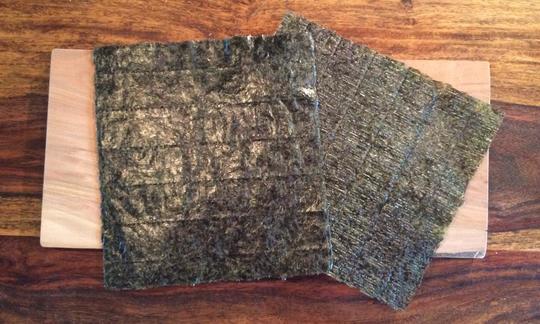

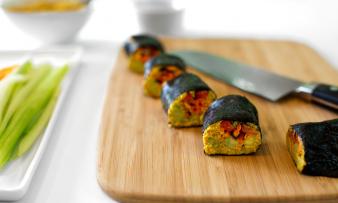
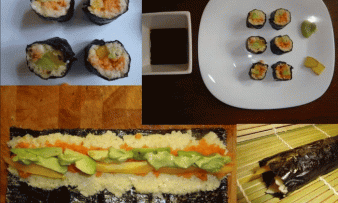
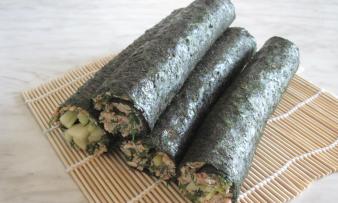

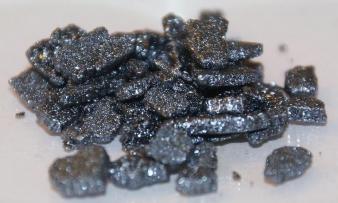



Comments